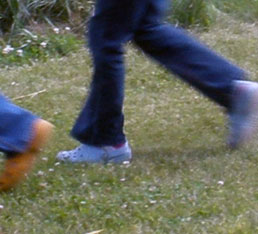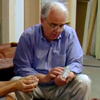1. Under Foot

What’s under foot? As we walk around on Earth every day, we might not consider what’s right under our feet, but these materials are literally the foundation of our planet. In these investigations, students “get their hands dirty” and become familiar with some of the materials that make up Earth’s surface: gravel, clay, rocks, minerals, soil, bits of plants and trees, oil and water.
These materials, while ordinary, are complex and varied. One goal of this unit is to help students learn how to make sense of this diversity by closely observing earth materials and recording their properties. We begin by investigating properties of rocks and the minerals that compose them. We then move to soil — including the "empty" spaces between the grains that may be filled with air or water.
As they investigate their collection of earth materials, students become familiar with their properties, size and composition, and begin to consider the idea of “parent material.”
Investigations:
- 1.1 What are some different kinds of earth materials?
- 1.2 What can we learn about rocks by observing them carefully?
- 1.3 What can we learn about minerals by observing them carefully?
- 1.4 What is soil made of?
The Child and the Scientist

The Child: The Challenges of Developing Explanations Based on Data and Reasoning

The Scientist:
What's important about reasoning and evidence?
Letters from the Engineer
While students use science practices to deepen their understanding of scientific ideas throughout this curriculum, some of their investigations bridge to the engineering world. To highlight some of the instances where students engage in an engineering practice or gain insight into the engineer’s world, the curriculum includes Letters from the Engineer. Look for these letters (in the special boxes) and read them to the class.





